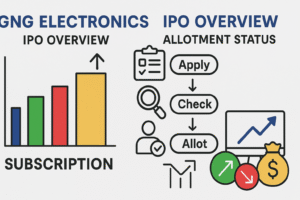
Top 3 Large Cap Mutual Funds for SIP in India 2025
Reliable SIP Fund Choices for Long-Term Wealth Creation & Stability
Introduction to Large Cap Funds
In an investment landscape marked by volatility, geopolitical challenges, and macroeconomic uncertainties, stability is the key for most investors. Large-cap mutual funds—focused on the top 100 companies by market capitalization—offer a blend of safety, scale, and steady growth, making them an excellent choice for both new and seasoned investors.
These funds invest a minimum of 80% of their assets into large-cap stocks, companies known for strong financials, robust management, and established industry leadership. This focused approach provides investors with the benefits of diversification, professional management, and risk mitigation.
Why Choose Large Cap Funds?
Large-cap companies enjoy significant advantages such as:
- Economies of scale due to extensive operations across sectors.
- Access to resources allowing them to invest in innovation and expansion.
- Financial stability and resilience in economic downturns.
- Ethical and efficient management fostering sustainable growth.
- Market leadership with a wide moat protecting their business against competition.
Compared to mid and small-cap funds, large caps generally show lower price volatility, making them suitable for investors seeking steady returns with moderated risk.
Key Criteria for Selecting Large Cap Funds
Before investing in a large-cap mutual fund, consider the following factors to make an informed decision:
- Fund Performance: Look for consistent long-term growth through 3-year, 5-year, and 10-year SIP returns.
- Portfolio Quality: Examine the mix of companies, sector allocation, and diversity of holdings.
- Fund Management Style: Growth-at-Reasonable-Price (GARP), value investing, or balanced strategy.
- Risk Ratios: Sharpe ratio, Sortino ratio, and portfolio turnover indicate risk-adjusted returns and fund activity level.
- Assets Under Management (AUM): A healthy AUM reflects investor trust and fund stability.
- Expense Ratio: Lower expense ratio means more cost-effective investing.
Top 3 Large Cap Funds for SIP in 2025
Below are the three leading large cap funds recommended for SIP investors looking for stability and wealth creation over the long term.
1. Nippon India Large Cap Fund
Launched in August 2007 (originally as Reliance Large Cap Fund), Nippon India Large Cap Fund is a market favorite for investors seeking growth with a focus on quality businesses. It uses the Growth at Reasonable Price (GARP) strategy, aiming to invest in companies with strong fundamentals trading at fair valuations.
Portfolio & Holdings: As of July 2025, it holds about 69 stocks predominantly in large caps (83%), with midcaps (11%) and small caps (4%). Top holdings include HDFC Bank (8.9%), Reliance Industries (6.3%), and ICICI Bank (5.5%). The fund favors sectors like banking, FMCG, and finance.
Performance & Returns: Over the last 10 years, the fund has delivered an impressive 17.64% XIRR on SIPs, outperforming the Nifty 100 TRI benchmark of 14.26%. A Rs 10,000 monthly SIP would have grown to over Rs 30.3 lakh from an investment of Rs 12 lakh.
2. ICICI Prudential Large Cap Fund
Initially launched as ICICI Prudential Bluechip Fund in 2008, this fund was renamed in 2025 to better align with its focus on large-cap stocks. It blends value and growth investing with a bottom-up approach, emphasizing companies with a solid track record and scalable business models.
Portfolio & Holdings: It manages the largest AUM among large caps at Rs 718 billion. The portfolio has about 63 stocks, with 81% large caps, 9% midcaps, and a small cash allocation. Top stocks include HDFC Bank (9.7%), ICICI Bank (9%), and Reliance Industries (6.7%). Sectors like banking, auto ancillaries, and oil & gas dominate.
Performance & Returns: The fund has demonstrated consistent returns, with a 10-year SIP XIRR of 16.65%, beating the Nifty 100 benchmark. Your Rs 10,000 monthly SIP would grow to approximately Rs 28.7 lakh from an investment of Rs 12 lakh.
3. DSP Large Cap Fund
Launched in 2003 and renamed as DSP Large Cap Fund, this scheme focuses on a blend of growth and value investing. Avoiding index mimicry and market momentum chasing, it invests in stocks with robust earnings quality and intrinsic worth.
Portfolio & Holdings: With about 32 stocks, it maintains a concentrated portfolio holding 80% large caps alongside mid and small caps. The top sectors include banks, auto ancillaries, and healthcare. Top stocks feature HDFC Bank and ICICI Bank in significant proportions.
Performance & Returns: Though slightly below the other two in absolute SIP returns—14.23% XIRR over 10 years—it boasts strong risk-adjusted performance indicators. A Rs 10,000 monthly SIP would now be valued at Rs 25.2 lakh, starting from Rs 12 lakh invested.
Comparative Performance & Portfolio Snapshot
| Fund Name | AUM (Rs Billion) | Top 3 Sectors | 10 Yr SIP XIRR (%) | 10 Yr SIP Value (Rs in Lakh) | Top 3 Holdings (%) | Portfolio Size (Stocks) | Portfolio Turnover (1 Yr) |
|---|---|---|---|---|---|---|---|
| Nippon India Large Cap Fund | 442 | Banks, FMCG, Finance | 17.64% | 30.3 | HDFC Bank (8.9), Reliance (6.3), ICICI Bank (5.5) | 69 | 15-30% |
| ICICI Prudential Large Cap Fund | 718 | Banks, Auto & Ancillaries, Oil & Gas | 16.65% | 28.7 | HDFC Bank (9.7), ICICI Bank (9), Reliance (6.7) | 63 | 15-22% |
| DSP Large Cap Fund | 63 | Banks, Auto & Ancillaries, Healthcare | 14.23% | 25.2 | HDFC Bank (9.5), ICICI Bank (8.2), Mahindra & Mahindra (5) | 32 | 18-42% |
Benefits of SIP in Large Cap Funds
Systematic Investment Plans (SIP) in large cap funds offer multiple advantages for investors, especially in volatile market conditions:
- Rupee Cost Averaging: SIPs allow buying more units when prices fall and fewer when prices rise, reducing average cost per unit over time.
- Disciplined Investing: Encourages regular investment habits irrespective of market conditions.
- Compounding Growth: Consistent investments over long periods benefit from compounding returns.
- Reduced Market Timing Risk: Eliminates the guesswork of when to enter the market.
- Lower Initial Investment: SIPs enable investing smaller amounts that are affordable to most investors.
Investment Tips & Considerations
To maximize benefits from large cap mutual funds via SIP, keep these points in mind:
- Minimum 3-5 Year Horizon: Large cap funds reward patience; short-term market movements can be volatile.
- Diversify: Combine with mid and small cap or debt funds based on your risk appetite.
- Review Fund Performance: Periodically check fund returns and management changes.
- Stay Committed: Avoid stopping SIPs during downturns; markets tend to recover over long terms.
- SIP Top-up: Increase SIP amounts periodically to enhance wealth creation as income grows.
Final Thoughts
In the current scenario marked by uncertainty, large cap mutual funds remain a safe and prudent choice for investors aiming for long-term wealth creation with moderated risks. The Nippon India Large Cap Fund, ICICI Prudential Large Cap Fund, and DSP Large Cap Fund have demonstrated strong track records with consistent returns and thoughtful management strategies.
By adopting SIPs in these funds, investors enjoy the benefits of rupee-cost averaging, disciplined investing, and compounding growth. Remember to maintain a minimum investment horizon of three years and align your portfolio with your risk tolerance and financial goals.
Invest wisely and remain focused on your long-term financial journey.








Post Comment